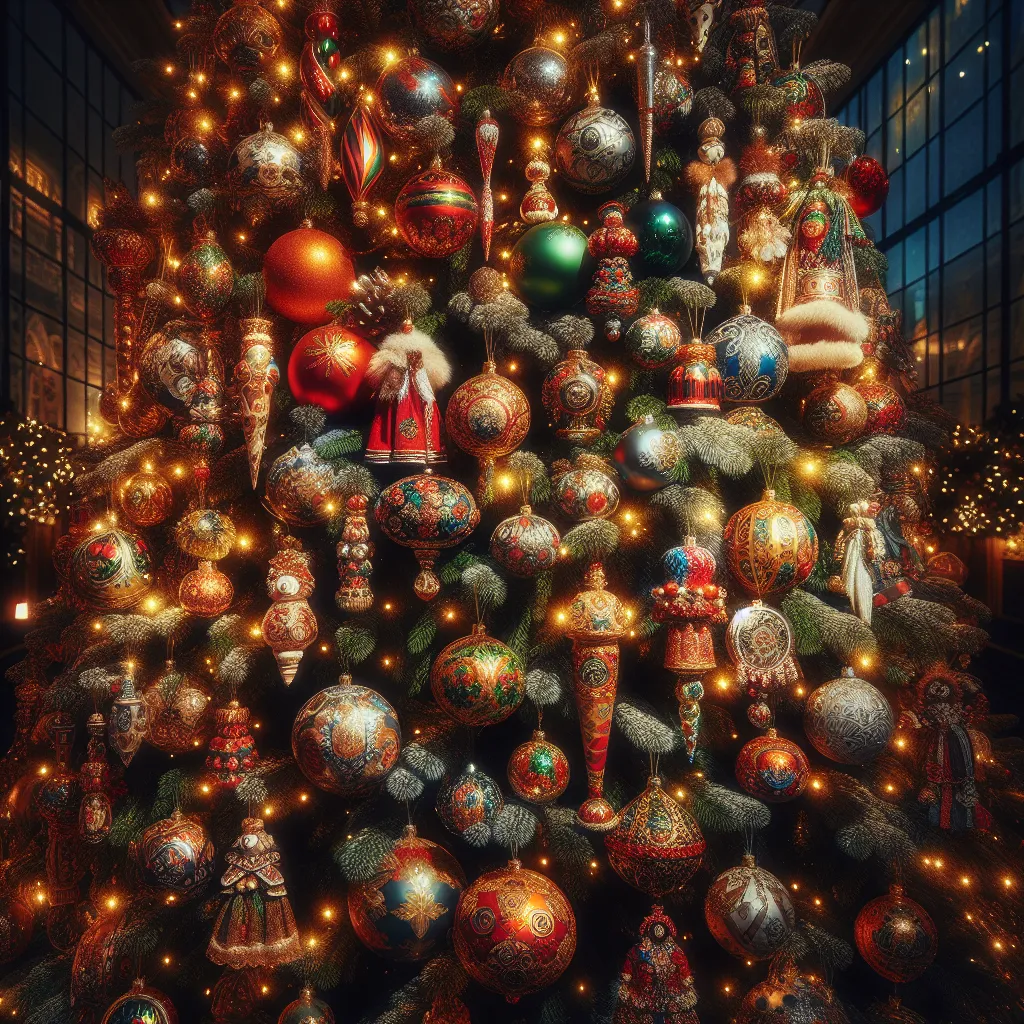The Origins of Baubles in Holiday Celebrations
Exploring the history and significance of baubles in holiday traditions reveals a rich tapestry of cultural and religious significance. The origins of baubles in holiday celebrations can be traced back to ancient civilizations such as the Romans, Egyptians, and Celts, who adorned their homes with decorative ornaments during festive occasions. In ancient Rome, for example, people would hang small trinkets on trees during Saturnalia, a winter festival in honor of the god Saturn. In ancient Egypt, they used to decorate their homes with ornaments during the celebration of the winter solstice to symbolize the sun god’s power and the promise of spring.
Furthermore, the tradition of decorating trees with baubles became more widespread in the 16th century in Germany, where people would embellish evergreen trees with apples, nuts, and other small items. Over time, this tradition evolved, and glassblowers in Germany began producing colorful glass baubles to hang on the trees. This innovation marked the beginning of the modern bauble as we know it today, and its popularity spread throughout Europe and eventually to the United States and beyond.
Understanding the origins of baubles in holiday celebrations offers a glimpse into the timeless custom of adorning homes and trees with festive ornaments. As we continue to embrace this tradition, it is essential to recognize the historical and cultural significance that baubles hold in our holiday traditions.
Evolution of Baubles in Different Cultures and Traditions
Exploring the history and significance of baubles in holiday traditions reveals a rich tapestry of cultural evolution and diversity. The evolution of baubles in different cultures and traditions reflects the fascinating ways in which these decorative ornaments have been adapted and integrated into various festive practices across the globe.
In ancient times, baubles were crafted from materials such as wood, metal, and clay, often symbolizing elements of nature, religious beliefs, or cultural customs. These early iterations of baubles adorned homes and celebratory spaces, serving as talismans of good fortune and protection.
As time progressed, the use of baubles expanded and transformed as different cultures interacted and exchanged traditions. The Renaissance period saw the emergence of intricately designed glass baubles in Europe, sparking a trend that would eventually become synonymous with Christmas traditions in many parts of the world.
In Asia, baubles took on a unique identity, with delicate ornaments made from silk, paper, or bamboo becoming integral parts of rituals and festivities. The symbolism imbued within these Asian baubles often reflected themes of prosperity, longevity, and spiritual interconnectedness.
As global exploration and trade flourished, the exchange of cultural practices introduced new interpretations of baubles to different continents. African traditions incorporated vibrant, handcrafted baubles as symbols of community, heritage, and celebration, adding a distinctive flair to holiday decor.
Today, the evolution of baubles reflects a wonderful fusion of traditions, with modern iterations showcasing a diverse range of styles, materials, and meanings. Whether it’s the sparkling glass baubles adorning Christmas trees in Western households or the intricate handmade ornaments displayed during Diwali celebrations in India, these decorations continue to encapsulate the beauty of cultural exchange and creative expression.
In conclusion, the evolution of baubles in different cultures and traditions exemplifies the enduring significance of these ornaments in holiday customs worldwide. Their journey through history serves as a testament to the power of cultural adaptation, creativity, and the universal human desire to infuse festivities with beauty and meaning.
Symbolism and Meaning Behind Baubles in Festive Customs
When it comes to holiday traditions, baubles have played a significant role in festive customs around the world. These decorative ornaments, often associated with Christmas trees, hold symbolic meanings that date back centuries. The history of baubles can be traced to different cultural and religious practices, where they have represented various themes such as prosperity, hope, and the celebration of nature.
In ancient times, baubles were crafted from materials like glass, wood, or even fruit, and were used to adorn homes during winter solstice celebrations. The use of baubles as decorations was not only a way to bring color and beauty into the dark winter days but also to symbolize the renewal of life and the promise of light returning to the earth. As Christianity spread, the tradition of using baubles became intertwined with the festivities surrounding the birth of Jesus, with each bauble taking on spiritual significance.
Today, baubles continue to hold special meaning in holiday customs. The variety of shapes, colors, and designs reflect the diverse traditions and beliefs of different cultures. Red baubles may symbolize the blood of Christ in Christian traditions, while gold baubles are often associated with wealth and good fortune. In some cultures, baubles are believed to ward off evil spirits, bringing blessings and protection to the household.
As families gather to decorate their homes during the holiday season, the significance of baubles serves as a reminder of the rich history and symbolism behind these beloved ornaments. Whether it’s the joy of hanging the first bauble on the tree or the cherished memories associated with heirloom ornaments, the presence of baubles in festive traditions continues to evoke feelings of warmth, spirituality, and togetherness.
Modern Trends and Innovations in Bauble Design
Modern trends and innovations in bauble design have brought a fresh perspective to the traditional holiday ornament. While the history of baubles dates back to the 16th century in Germany, contemporary designs have evolved to reflect modern aesthetics and styles.
One notable modern trend in bauble design is the use of non-traditional materials such as acrylics, metals, and even recycled components. These unconventional materials allow for a broader range of shapes, colors, and textures, adding a contemporary flair to holiday decorations. Additionally, the incorporation of technology in bauble design has led to the creation of illuminated and interactive ornaments, adding a captivating and dynamic element to traditional holiday decor.
Furthermore, the trend of personalized baubles has gained popularity, offering individuals the opportunity to create custom ornaments that reflect their unique personality and style. From monogrammed initials to hand-painted designs, personalized baubles have become a significant aspect of modern holiday traditions.
Innovations in bauble design have also extended to the realm of sustainability, with an increased emphasis on eco-friendly materials and production processes. As environmental consciousness continues to grow, the demand for ethically sourced and environmentally friendly baubles has led designers to explore innovative eco-conscious alternatives, contributing to a more sustainable approach to holiday decor.
Overall, modern trends and innovations in bauble design have reinvigorated the timeless tradition of adorning holiday trees with decorative ornaments. From non-traditional materials and personalized options to sustainability-focused designs, the evolution of bauble design continues to shape and enhance the holiday experience for contemporary celebrants.

